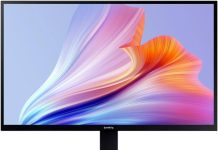Circuit boards, also known as printed circuit boards (PCBs), are the backbone of modern electronics. They come in various types, each designed for specific applications and environments. One crucial aspect that determines a PCB’s performance and reliability is its materials. In this blog, we’ll take a comprehensive look at circuit board materials, their types, properties, and applications.
Circuit Board Materials
PCB materials are chosen based on their electrical, mechanical, and thermal properties. The key materials used in PCB manufacturing include:
Substrate Materials
The base layer of a PCB, often made of fiberglass (FR-4) or other materials like ceramic or metal core for specialized applications.
Copper Foil
Used for conducting electrical signals and forming circuit traces.
Solder Mask
Protects copper traces from oxidation and provides insulation.
Silkscreen
Printed labels and indicators for component placement and identification.
Types of PCB Materials
These are the types of PCB Materials
FR-4
The most common substrate material, known for its high strength, electrical insulation, and affordability.
Flexible Materials
Used in flexible PCBs for applications requiring bending or movement.
Metal Core Materials
Enhanced thermal conductivity for heat dissipation in high-power electronics.
High-Frequency Materials
Designed for applications operating at GHz frequencies, offering low signal loss and impedance control.
Composite Materials
Combining different properties for specialized applications like aerospace or automotive electronics.
Common components of printed circuit boards
Printed Circuit Boards (PCBs) are complex assemblies that integrate various electronic components to facilitate the functioning of electronic devices. Here are some common components you’ll find on a typical PCB:
Resistors
These components limit the flow of electric current and are essential for controlling voltage levels and currents in a circuit.
Capacitors
Capacitors store and release electrical energy, helping to smooth voltage fluctuations, filter signals, and block DC currents in AC circuits.
Inductors
Inductors store energy in a magnetic field and are crucial for filtering signals, tuning circuits, and controlling current flow in electronic devices.
Diodes
Diodes allow current to flow in one direction and block it in the opposite direction. They’re used in rectification, signal demodulation, and protection circuits.
Transistors
Transistors act as amplifiers or switches in electronic circuits, controlling the flow of current and voltage based on input signals.
Integrated Circuits (ICs)
ICs are miniaturized electronic circuits that can contain thousands to millions of electronic components. They’re used for processing, amplification, logic functions, and memory storage.
Microcontrollers
These are specialized ICs that include a processor, memory, and input/output peripherals. They’re used for controlling and managing the operation of electronic systems.
Connectors
Connectors allow for the physical connection between the PCB and external components or other PCBs. They include headers, sockets, USB ports, and audio jacks.
Switches
Switches control the flow of electricity in a circuit, enabling users to turn devices on or off, select modes, or change settings.
LEDs (Light-Emitting Diodes)
LEDs emit light when current passes through them and are used for indicators, displays, and lighting in electronic devices.
Crystal Oscillators
These components generate precise frequencies used for timing, synchronization, and clock signals in digital circuits.
Fuse and Circuit Breakers
These components protect circuits from overcurrents and short circuits by interrupting the flow of electricity when necessary.
Voltage Regulators
Voltage regulators maintain a stable output voltage despite fluctuations in input voltage, ensuring reliable power supply to sensitive components.
Relays
Relays are electromechanical switches that control high-power circuits using a low-power signal. They’re used in automation, control systems, and power distribution.
Sensors
Sensors detect changes in physical properties like temperature, pressure, light, or motion, providing input to electronic systems for monitoring and control purposes.
What PCBs exist and what are they made from?
PCBs come in various types, each designed for specific applications. Common types include single-sided PCBs, where components are mounted on one side; double-sided PCBs with components on both sides; and multi-layer PCBs with multiple copper layers sandwiched between insulating substrates. PCBs are primarily made from fiberglass-reinforced epoxy resin (FR-4) for their substrate, copper for conductive traces, and solder mask for insulation and protection. Other materials like ceramic or metal core PCBs are used for specialized applications requiring enhanced thermal conductivity or flexibility.
Properties and Characteristics
- Dielectric Constant (Dk): Determines signal propagation speed and impedance matching.
- Thermal Conductivity: Important for dissipating heat in high-power circuits.
- Flame Retardancy: Ensures safety by preventing PCBs from catching fire.
- Dimensional Stability: Minimizes warping or distortion during manufacturing or operation.
- Environmental Resistance: Ability to withstand moisture, chemicals, and temperature variations.
Applications of Different PCB Materials
- Consumer Electronics: FR-4 and flexible materials in smartphones, laptops, and IoT devices.
- Industrial Electronics: Metal core materials in power supplies, motor controllers, and LED lighting.
- Communications: High-frequency materials in antennas, RF modules, and telecommunications equipment.
- Automotive: High-temperature and rugged materials for automotive control units and infotainment systems.
- Aerospace and Defense: Specialized composite materials for avionics, radar systems, and military applications.
Choosing the Right Material
Selecting the optimal PCB material depends on factors like:
- Operating Environment: Temperature range, moisture exposure, and chemical resistance.
- Signal Integrity Requirements: High-frequency performance, impedance control, and signal loss.
- Mechanical Flexibility: For flexible or rigid-flex PCBs in wearable devices or aerospace applications.
- Cost Considerations: Balancing performance with budget constraints.
Future Trends and Innovations
- Advanced Substrates: Development of materials with higher thermal conductivity and lower loss for 5G and IoT applications.
- Flexible and Stretchable Materials: Integration of electronics into wearable and healthcare devices.
- Environmentally Friendly Materials: Recycling initiatives and use of sustainable materials for eco-friendly PCBs.
- Nanotechnology: Nanocomposite materials for enhanced performance and miniaturization.
Conclusion
Circuit board materials play a critical role in the performance, reliability, and longevity of electronic devices. As technology advances, we can expect continuous innovation in PCB materials, leading to more efficient, durable, and environmentally sustainable electronics.
This deep dive into circuit board materials underscores their significance in the world of electronics and highlights the ongoing quest for materials that push the boundaries of performance and functionality.
Summary
Unveiling the Essentials: A Deep Dive into Circuit Board Materials delves into the critical aspects of PCB construction. The blog explores various materials like FR-4, flexible substrates, and metal cores, highlighting their properties such as dielectric constant, thermal conductivity, and flame retardancy. It also discusses the applications of different PCB materials in consumer electronics, industrial sectors, communications, automotive, and aerospace industries, emphasizing the importance of choosing the right material based on environmental factors, signal integrity, flexibility, and cost considerations. The blog anticipates future trends in PCB materials, showcasing advancements in substrates, flexible materials, environmentally friendly options, and nanotechnology, underscoring the continual evolution and innovation in electronic manufacturing.







